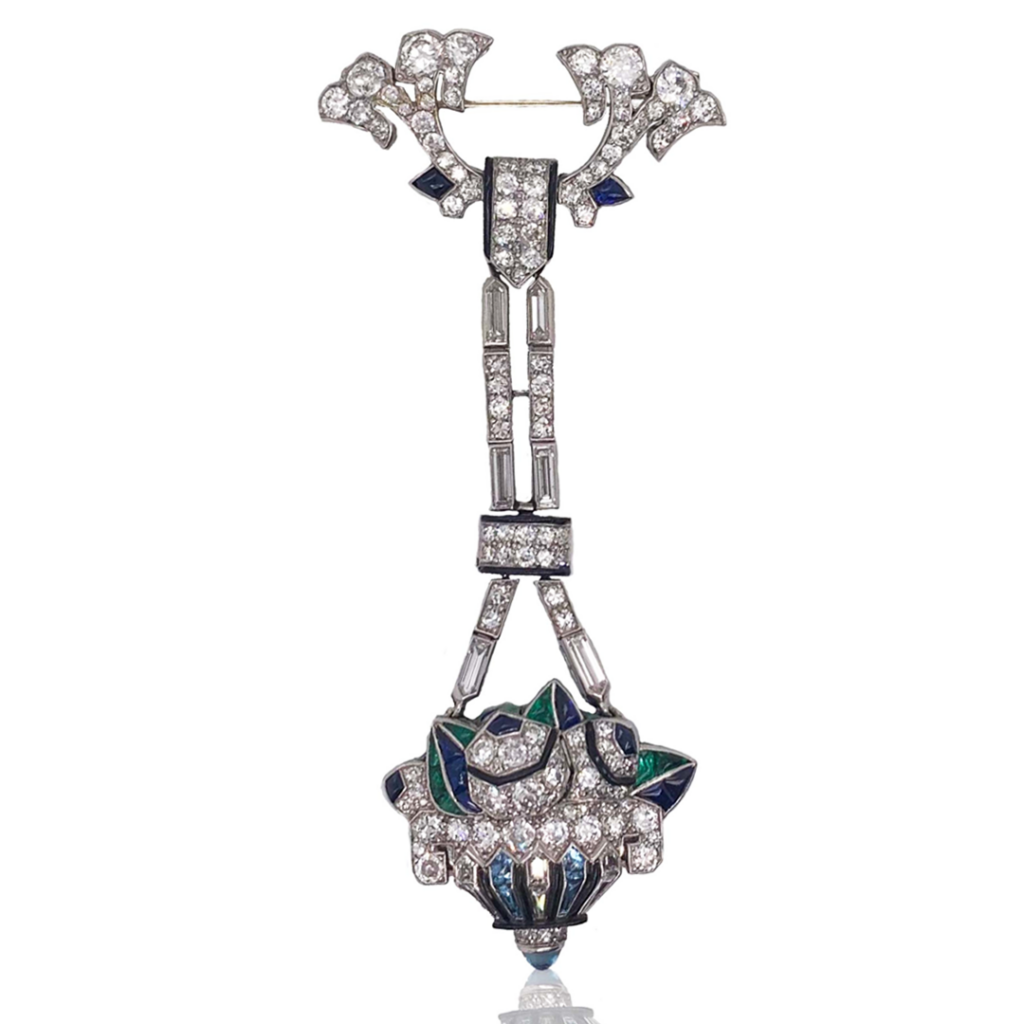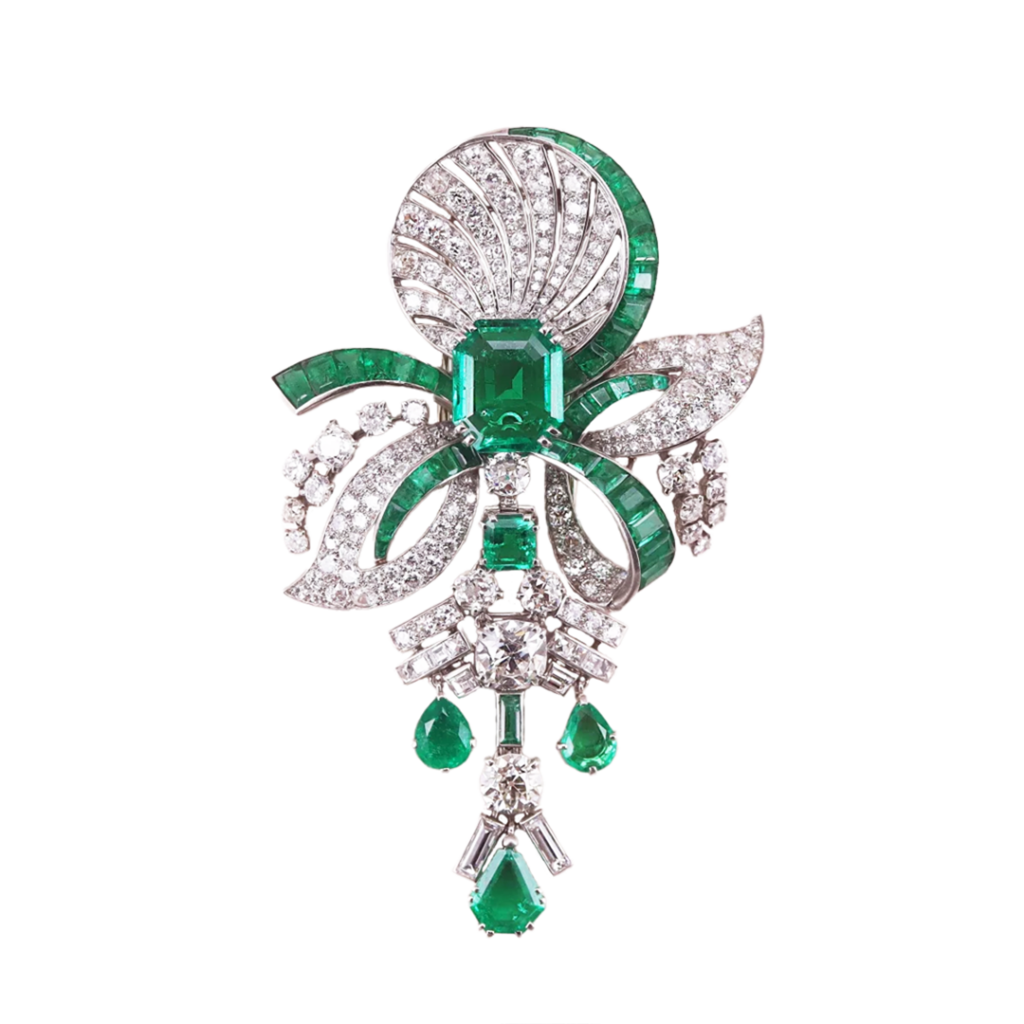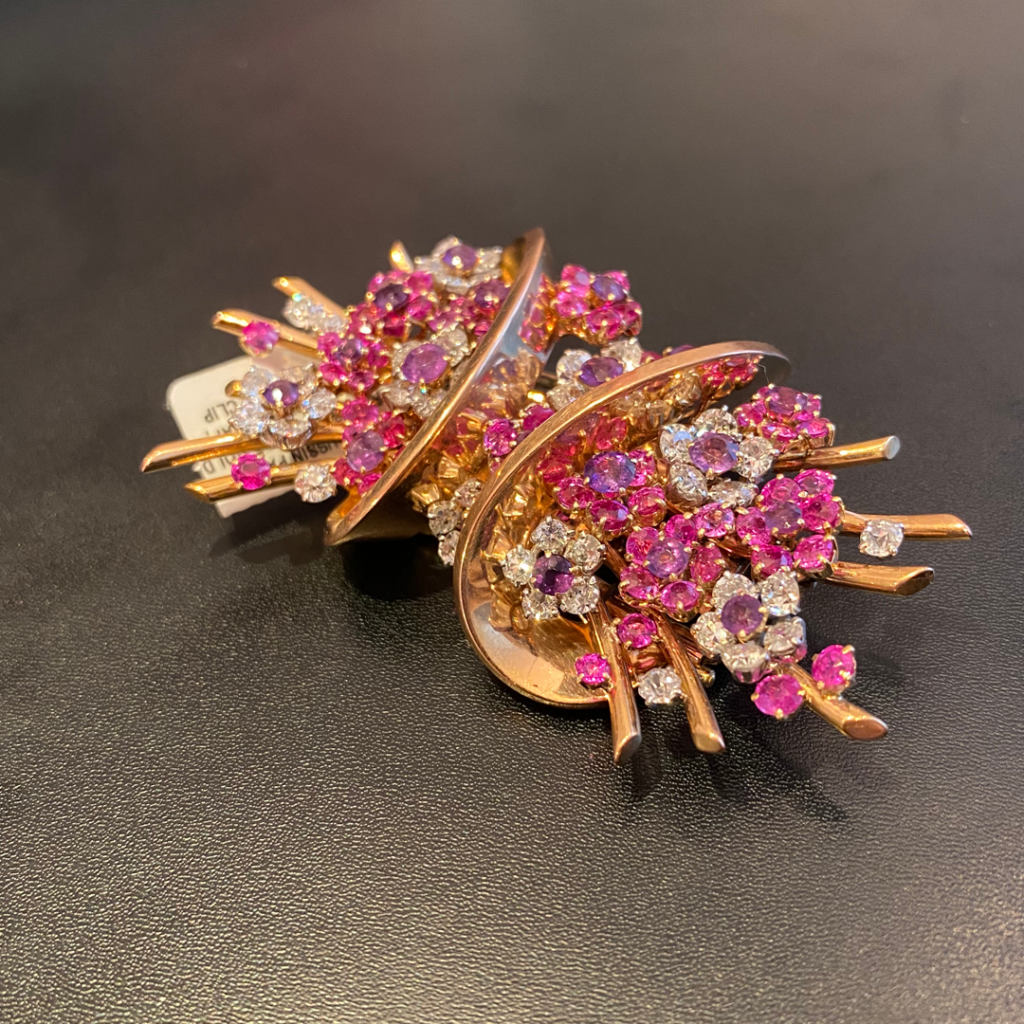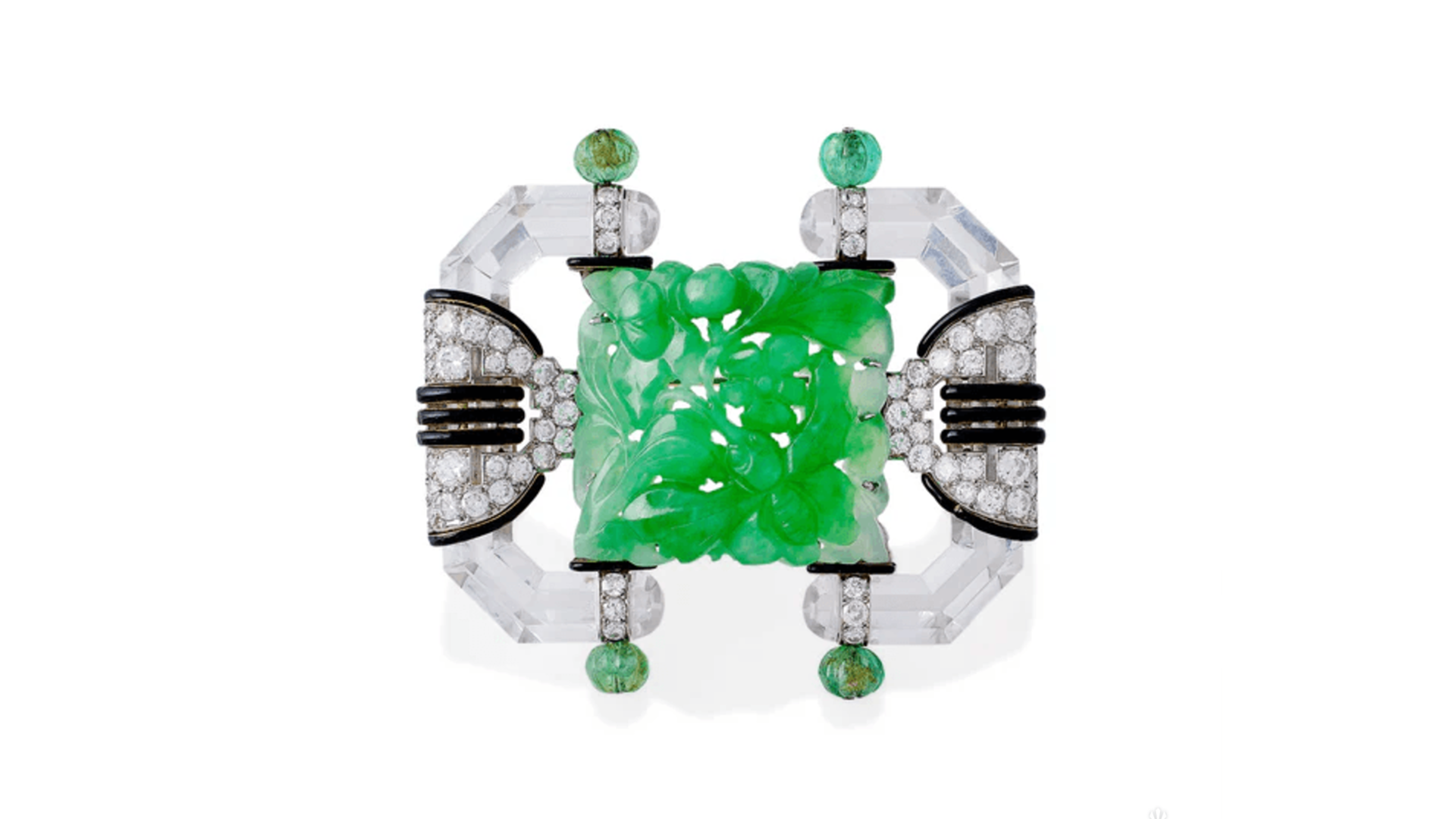When it comes to jewelry, the French makers are known to be among the very best and one of those very best is Mauboussin. Known in particular for its creations during the Art Deco years and into the 1940s, Mauboussin is renowned for its use of exceptional colored gemstones in striking designs.
The Paris-based firm got its start in 1827, a rather turbulent time in French history with revolutions, war and a cholera epidemic shadowing the country. Despite the political instability of France in the early 1800s, Paris was a center of sophisticated culture with a lively art scene that attracted creatives to the City of Lights. During these years jewelry was worn mostly to show wealth and social status.
Mauboussin Becomes Workshop Manager

Despite dark times, a jeweler named Rocher, decided to gamble on better days ahead and opened a jewelry workshop, in 1827, his firm was later taken over by his partner Jean-Baptiste Noury, who renamed the company Maison Noury. By the mid to late 1800s political tensions eased in France and it became more stable. Noury hired his nephew Georges Mauboussin as an apprentice in his shop. Mauboussin excelled becoming the workshop manager in 1883 and in 1898 he took over the firm.
By the time Georges Mauboussin took over Maison Noury, Paris was gaining a reputation as the international center of jewelry making. It is widely believed that platinum was first used to make jewelry in France and Mauboussin was an early adopter of this new technology. After World War I ended, Mauboussin decided it would be in the best interests of the company to move closer to the Opera District. He made a move to Rue de Choiseul in 1923, where he housed his entire business from lapidary and diamond cutting workshops to designers and setters and finally on the ground floor a private sales area.
Mauboussin: The Art Deco Years

1920s Paris was one big party with Maharajahs from India and Princes from Russia cavorting with fashion designers and other creatives stirring up an environment that was ripe for creativity and newness. The flamboyant Ballets Russes was a favorite with Parisians along with a taste for the exotic. Mauboussin began to create jewelry that appealed to these desires, using materials that were innovative for the time including jade, pearls, coral, lapis lazuli, mother of pearl, carved gemstones from India and shellac. The designs during this time were influenced by the Cubist movement and its geometric straight line shapes.
These superbly crafted jewels with their extraordinary gemstones made a big splash garnering the firm recognition at major international exhibitions. The firm won a major prize at the French Exhibition in New York, 1924; a gold medal at the Decorative Arts Exhibition, Paris in 1925; as well as honors from the Galliera Exhibition, Paris 1929 and the Colonial Exhibition in 1931.
The Indore Diamonds
One of Mauboussin’s best known clients was the Maharajah of Indore, Yashwant Rao Holkar. He was known to have a good eye for design and was a connoisseur of Art Deco jewelry. In 1933, Mauboussin was appointed as purveyor by the Maharajah himself. Mauboussin created jewelry to adorn ceremonial attire using precious gems from the Maharajah’s collection including the two pear shaped Indore Diamonds and the Porter Rhodes Diamond.
Meanwhile the company had been expanding, opening a branch in New York City in October 1929. What seemed to be terrible timing actually morphed into a mutually beneficial partnership with Trabert & Hoeffer. They did business under the name Trabert & Hoeffer-Mauboussin setting up a flasghsip store on Park Avenue. They opened stores around the U.S. attracting a stellar clientele that included Charlie Chaplin, Mary Pickford, Paulette Goddard, Marlena Dietrich and Queen Nazli of Egypt, all attracted by the sumptuous elegance of the jewelry.

Modern Lifestyles

Mauboussin was making jewelry for women with modern lifestyles and at the 1939 New York World Fair, the jeweler introduced convertible jewelry that did double duty, such as a brooch that could also be worn as dress clips or a pendant. Moving into the 1940s, platinum was declared a strategic metal for war use and gold became more fashionable once again. Mauboussin rose to the occasion with metals worked in such a way that it created the texture of fabric. And in 1946 the company moved to 20 Place Vendome. Magazines in the U.S. and Europe were featuring jewelry from Mauboussin adding to its prestige.
The 1960s and 1970s brought more changes for Mauboussin as New York City became the center of the jewelry world. It was also a time of great change in society and jewelry became more figurative with florals, birds and bright colors leading the way. Turquoise and coral were added to the gemstone palette. While the designers begin to incorporate wood, ivory and malachite into their creations.
With the 1980s came a new look for the firm. The jewelry was simplified emphasizing, curves and tactile qualities. Watches were introduced in the 1990s. Today, the company produces jewelry that reflects the diversity of people all over the world and the universal emotions that jewelry evokes.
Top of Page: Carved jadeite, carved rock crystal, carved emerald beads, diamond, black enamel, 18-karat grey gold and platinum brooch, signed Mauboussin France and numbered with French assay marks for gold and platinum, circa 1930-1935, courtesy Macklowe Gallery (@macklowegallery).
Authored by Amber Michelle
